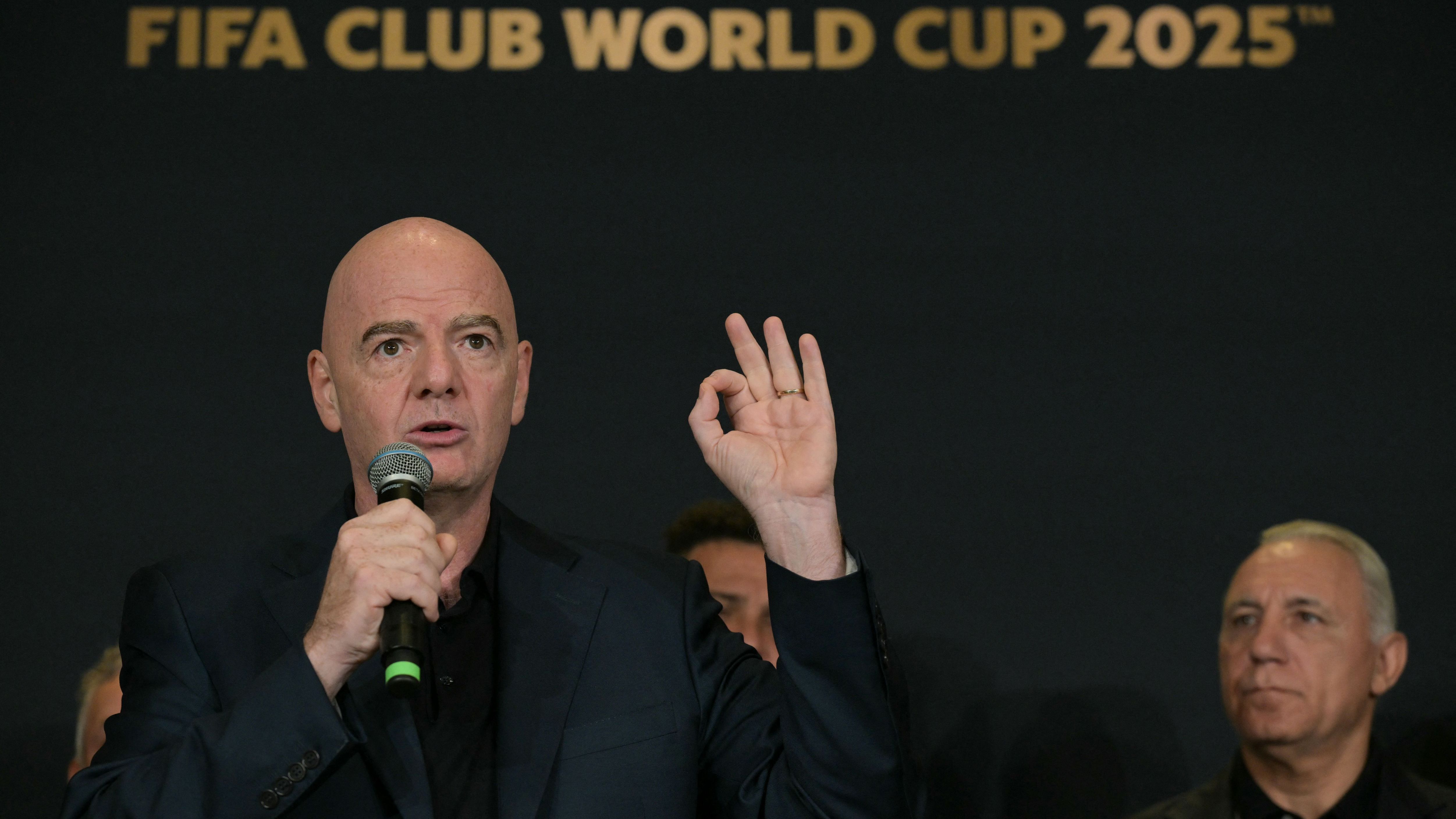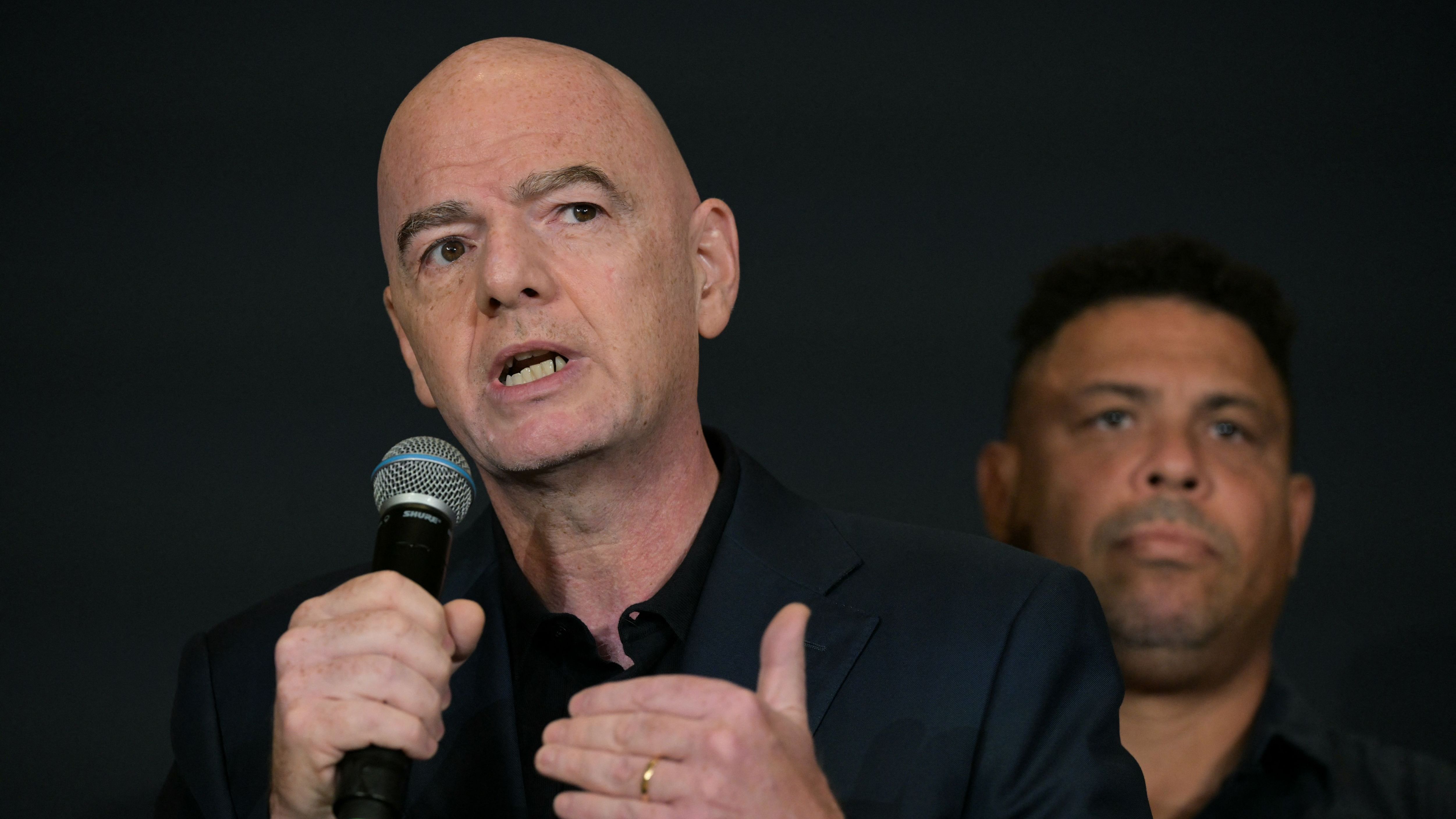Combating Extreme Weather: FIFA’s Commitment to Safer Stadiums for the 2026 World Cup
Imagine transforming the sweltering heat of summer matches into comfortable, controlled environments- that’s exactly what FIFA President Gianni Infantino has promised for the 2026 World Cup. As concerns mount over intense weather patterns, FIFA is stepping up with innovative solutions to ensure player safety and enhance the fan experience. This article dives into the organization’s plans to utilize covered stadiums, drawing lessons from recent events like the Club World Cup, and explores broader discussions on tournament scheduling and future improvements.



FIFA’s Approach to Extreme Conditions in the 2026 World Cup
In response to growing worries about harsh weather, Gianni Infantino, as FIFA’s leader, has outlined a strategy to employ stadiums with protective coverings for afternoon fixtures at the 2026 Men’s World Cup. Feedback from the ongoing FIFA Club World Cup in the United States has spotlighted problems like soaring temperatures and storms, influencing every stage of the event and prompting calls for immediate action.
Infantino shared with journalists during a New York press event that all critiques serve as valuable insights for enhancement. He pointed out that extreme heat poses a significant challenge, referencing the previous year’s Olympic events in Paris where athletes across various disciplines endured high temperatures during daylight hours.
To mitigate these issues, Infantino stressed the importance of measures like scheduled hydration pauses and confirmed the planned use of enclosed venues. “We have access to facilities with roofs, and they will certainly be in play for daytime events next year,” he explained.
The final of the Club World Cup features a showdown between the current European title holders, Paris Saint-Germain, and Chelsea at New Jersey’s MetLife Stadium. Scheduled to begin at 3 p.m. ET, the game anticipates temperatures around 84 degrees Fahrenheit (29 degrees Celsius), underscoring the real-world implications of weather on play.
During Chelsea’s semifinal clash with Fluminense at the same location earlier in the week, thermometers hit 96 degrees, leading the Global Players Union FIFPRO to recommend that at least three matches be rescheduled or halted due to the risks involved.
Adding his voice, Chelsea’s midfielder Enzo Fernandez called on FIFA to rethink the lineup for next summer’s World Cup, describing how the oppressive heat left him feeling disoriented and posed serious health threats.
Beyond heat, disruptive weather such as thunderstorms has caused significant delays in games this season. Among the World Cup sites, only four boast both roofs and climate control: Mercedes-Benz Stadium in Atlanta, AT&T Stadium in Dallas, NRG Stadium in Texas, and BC Place in Vancouver. These represent just a fraction of the 16 locations spread across the U.S., Canada, and Mexico.
Challenges with Tournament Expansion and Player Welfare
The enlargement of the tournament to include 32 teams has drawn scrutiny for overloading an already packed international football schedule. Athletes participating in the Club World Cup finale will face a tight turnaround, with less than a month to recuperate before the 2025-26 season kicks off, raising alarms about fatigue and injury risks.
Despite the backlash, Infantino stood by the event, highlighting enthusiastic responses from involved European squads. “I’ve conversed with representatives from teams that joined, and they’re all thrilled,” he noted. “Even those who missed out have reached out to FIFA inquiring about participation opportunities.”
While recognizing the exclusion of prominent clubs like Liverpool, Arsenal, Manchester United, Tottenham, AC Milan, and Barcelona, Infantino upheld the existing qualification standards. “Naturally, we’d welcome them, but standards must be met,” he added. “We’re committed to evolving this based on feedback and doing better moving forward.”
Exploring Future Reforms for Global Tournaments
Infantino hinted at potential overhauls, such as revising the number of teams per nation in upcoming editions. Questions like “Could we limit entries to two or expand to four per country?” are under consideration, he mentioned, as part of ongoing evaluations.
For the immediate future, the format will proceed as planned for 2029, with opportunities for refinement. Infantino expressed that the tournament’s performance exceeded his forecasts, declaring, “I’ve always valued diverse perspectives, and my initial thoughts have only strengthened. This marks the onset of football’s golden age, an overwhelming triumph.”
The Club World Cup final on Sunday starts at 3 p.m. ET and can be viewed live on DAZN.
Background on the 2026 World Cup
The 2026 FIFA World Cup is set to be one of the most expansive tournaments in history, featuring 48 teams and matches spread across multiple countries. With the United States, Canada, and Mexico as co-hosts, organizers have been grappling with environmental challenges, particularly the intense daytime heat in various host cities. FIFA President Gianni Infantino has been at the forefront of addressing these issues, emphasizing player safety and fan comfort as top priorities for this global event.
Key Host Cities and Climate Concerns
Several host cities, like Atlanta, Houston, and Mexico City, experience sweltering summer temperatures that could exceed 35°C (95°F) during the tournament’s likely June-July schedule. This heatwave potential isn’t just uncomfortable-it’s a real risk for athletes and spectators alike. Infantino’s push for covered stadiums aims to mitigate these conditions, ensuring that games can proceed without interruptions due to extreme weather.
- Potential heat-related risks: Dehydration, heat exhaustion, and reduced performance for players.
- Spectator impact: Overcrowded venues in hot climates could lead to health issues, potentially deterring attendance.
- Historical context: Past World Cups, such as the 2022 event in Qatar, highlighted similar problems, prompting FIFA to rethink venue designs for 2026.
Gianni Infantino’s Confirmation on Covered Stadiums
In recent statements, FIFA President Gianni Infantino confirmed that several stadiums for the 2026 World Cup will feature advanced covering systems to combat daytime heat. This announcement, made during a FIFA council meeting, underscores the organization’s commitment to adapting to climate change in international soccer.
Details of the Stadium Upgrades
Infantino specified that at least 10 of the 16 proposed stadiums will incorporate retractable roofs or full coverings, allowing for temperature-controlled environments. These upgrades are part of a broader sustainability initiative, blending technology with environmental responsibility. For instance, stadiums in hotter regions like Texas and Arizona are prioritizing features that can reduce internal temperatures by up to 15-20 degrees compared to outdoor conditions.
- Timeline for implementation: Construction and retrofitting are slated to begin in 2024, with completion targeted before the 2026 kickoff.
- Cost implications: FIFA estimates an additional $500 million in investments, but Infantino argues this is essential for long-term player welfare and event success.
- Partnerships involved: Collaborations with architectural firms and tech companies are driving innovations, ensuring that coverings are energy-efficient and eco-friendly.
Reasons for Implementing Covered Stadiums
The primary driver behind covered stadiums is the need to counter daytime heat, but this decision also touches on broader themes like athlete health and environmental stewardship in soccer.
Countering Daytime Heat Effectively
Daytime matches during the 2026 World Cup could face peak heat hours, making covered stadiums a practical solution. These structures will use shading and cooling technologies to create a more temperate atmosphere, directly addressing the risks associated with high temperatures in host cities.
- Cooling mechanisms: Integrated air conditioning and evaporative cooling systems that minimize energy use while maintaining comfortable conditions.
- Data-driven decisions: FIFA’s research, based on climate models, shows that uncovered stadiums could increase injury rates by up to 20% due to heat stress.
- Fan experience enhancements: Covered venues allow for better visibility and comfort, potentially boosting attendance and engagement with soccer worldwide.
Ensuring Player and Fan Safety
Beyond heat, covered stadiums promote overall safety by protecting against other weather elements like sudden rains or UV exposure. Infantino has repeatedly highlighted how these measures align with FIFA’s evolving standards for player protection in professional soccer.
Specific Safety Features
- UV protection: Roofs with specialized materials that block harmful rays, reducing skin cancer risks for players and fans.
- Emergency response integration: Covered designs include better airflow systems for quick evacuation if needed, adhering to global safety protocols.
- Accessibility improvements: Features like shaded entryways ensure that elderly fans or those with health conditions can enjoy the game without exposure risks.
Technological Innovations in Stadium Design
FIFA is leveraging cutting-edge technology to make covered stadiums for the 2026 World Cup a benchmark in sustainable soccer infrastructure. These innovations not only tackle heat but also set a precedent for future events.
Types of Covering Systems
Various stadiums will employ different technologies, from fully retractable roofs to partial shades, based on the specific needs of each host city. For example, the MetLife Stadium in New Jersey might use a hybrid system that combines solar panels with roofing for dual benefits.
- Retractable roofs: Allow for open-air play when weather is mild, then close for protection-ideal for versatile climates.
- Advanced materials: Lightweight, eco-friendly fabrics that reflect sunlight and reduce heat absorption by up to 70%.
- Smart technology integration: AI-driven systems that adjust coverings based on real-time weather data, optimizing energy use in soccer venues.
Impact on the Game and Beyond
Covered stadiums could transform how soccer is played and perceived, especially in the context of the 2026 World Cup’s global reach.
Benefits for Players and Performance
By minimizing heat exposure, these stadiums could enhance player endurance and reduce fatigue-related errors during high-stakes matches. Coaches and teams are already discussing how this might influence tactics and training for the tournament.
- Performance metrics: Studies suggest cooler environments could improve passing accuracy and sprint speeds by 10-15%.
- Recovery advantages: Quicker cool-down periods post-match, aiding in overall player health in professional soccer.
Environmental and Long-Term Considerations
This initiative reflects FIFA’s commitment to sustainability, with covered stadiums designed to lower carbon footprints through energy-efficient features. Gianni Infantino’s vision positions the 2026 World Cup as a model for green practices in sports.
Future-Proofing Soccer Infrastructure
- Global influence: Other leagues might adopt similar designs, inspired by FIFA’s 2026 efforts, to address climate change in soccer.
- Cost-benefit analysis: While initial investments are high, long-term savings in energy and maintenance could make this standard for future World Cups.
- Community impact: These stadiums could host year-round events, benefiting local economies and promoting soccer accessibility in hotter regions.
Incorporating these elements ensures that the 2026 World Cup not only delivers thrilling soccer action but also prioritizes the well-being of everyone involved, from players to fans, while adapting to the challenges of daytime heat.









